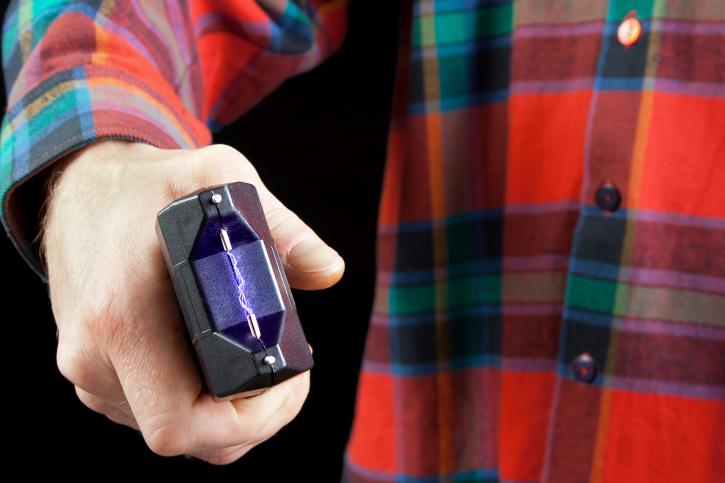
Every civilization devises ways to handle crowd control and immobilize aggressive persons (billysticks, anyone?). And with the onset of modern technology and a baseline appreciation of the ethical treatment of others, we generally prefer that our officers of the state use nonlethal measures when possible. Which brings us to the favored crime-thwarting tools of the 21st century: electroshock weapons such as tasers and stun guns.
These weapons of choice are, obviously, far from perfect (just ask this guy). Designed to temporarily incapacitate a person, without doing long-term damage, the electric charge is typically not intense enough to harm a person’s body. However, they are capable of causing cardiac arrest in some people, and user error can result in drawing an actual gun instead of the stun gun. Then there’s the fact that stunning a person simply seems gruesome.
But compared to what came before it, the modern stun gun is practically genteel. Let’s explore four predecessors to the current weapon of electric-paralysis, revealed in the 20th century onset of patent fever.
1. Electric Glove
The first uses of electroshock weapons to non-lethally control crowds took place during the 1930s, including with this sizzling hand accessory. According to an article from a 1935 science monthly, “A touch with the glove is enough to take all the fight out of the most recalcitrant disturber, since it imparts an electric shock with a kick . . . The paralyzing effect, however, is only temporary, and there are no burns or other after-effects.” It’s unclear that it was ever actually used in the field. It certainly seems like an inefficient weapon—requiring the user to take the time to put a glove on and then touch the aggressor up-close, rather than from a distance. Bonus points for fashionability, though!
2. Electrified Supersoaker
By the 1960s, there was all kinds of civil unrest in the country. And while police used actual cattle prods for a while, somehow people didn’t take kindly to literally being treated like farm animals. So following the New York race riots of 1964, President Johnson requested development of a different means for incapacitating the unruly. Enter a Massachusetts innovator who filed a 1965 patent for a “a long-range weapon that worked like an electrified supersoaker." But as anyone who half paid attention in elementary school science classes can tell you, water + electricity = DANGER! DANGER! So it’s no surprise that this electric water cannon was both potentially lethal and nearly impossible to control. Next?
3. Original Taser
Apparently there was a plenitude of engineering types eager to come up with ways to reign in the masses in the latter 20th century, because the next couple decades saw hundreds of different patents for neutralizing agitators—none of which seemed especially societally acceptable. The first taser, patented in 1974, had the basic components of models currently used—electrode projectiles tethered to a gun. It also had gunpowder. So let’s revise the previous equation: gunpowder + electricity = DANGER! DANGER! Moving on . . .
4. Original Stun Gun
Tinkering patenteers were getting closer to a viable solution. Finally in 1993, two brothers came up with a gunpowder-free version of the stun gun that began to catch on with law enforcement. Still, it took another 6 years before the weapon was honed enough to use in a demonstration (for some lucky volunteers), and then used more broadly.
And so, after various disturbing attempts, the country settled on the somewhat-less disturbing stun gun we know and love/hate today. Sorry cattle prods, you’ve had your day in the sun.
Image: ThinkStock






